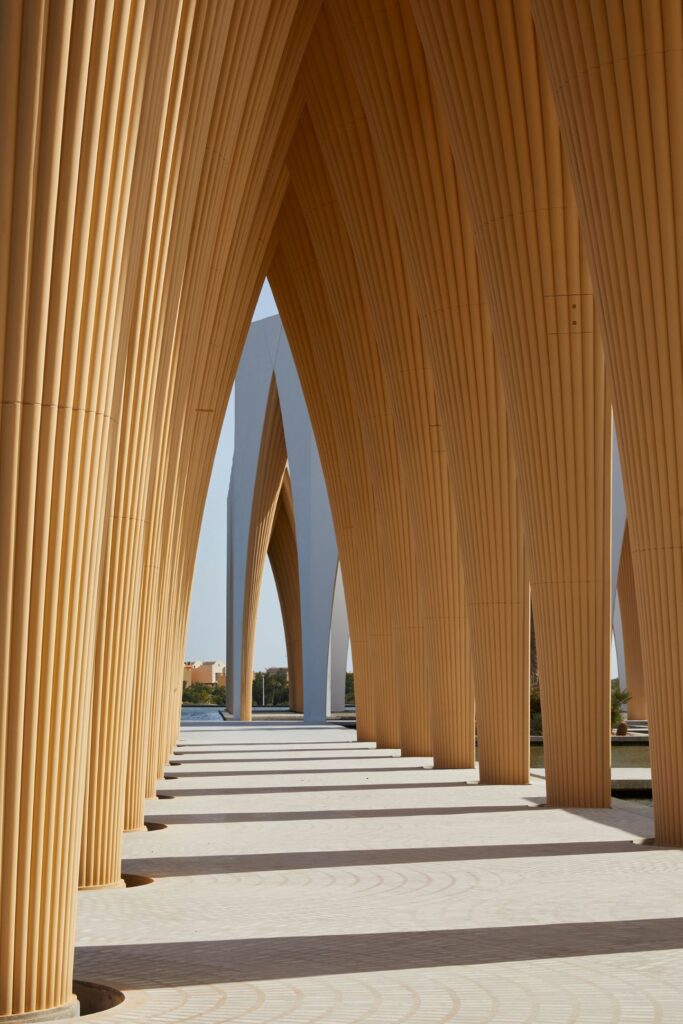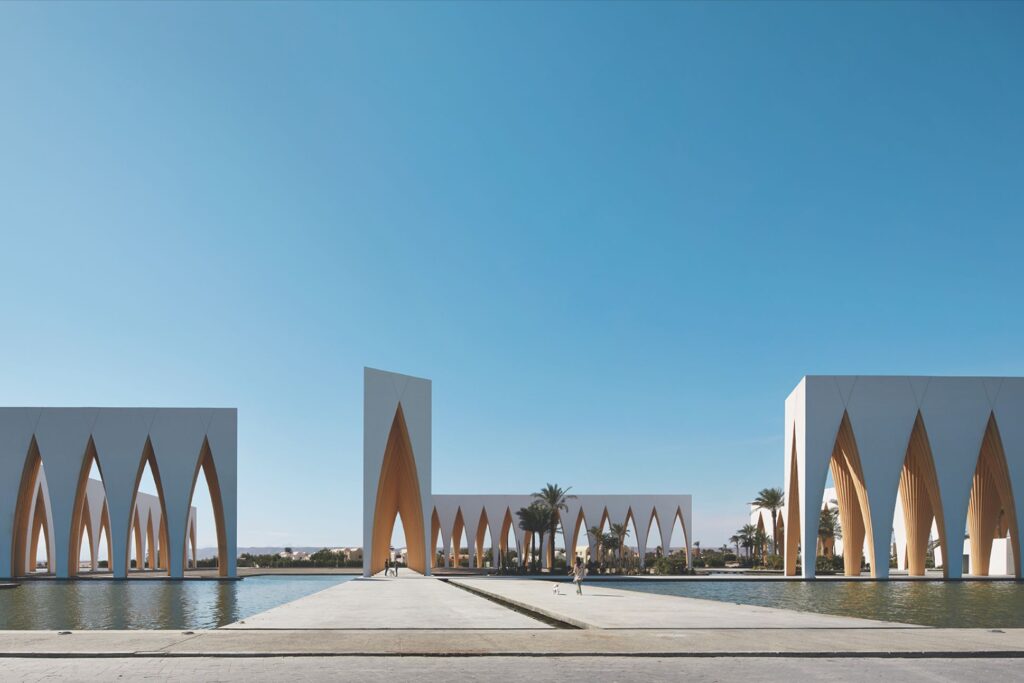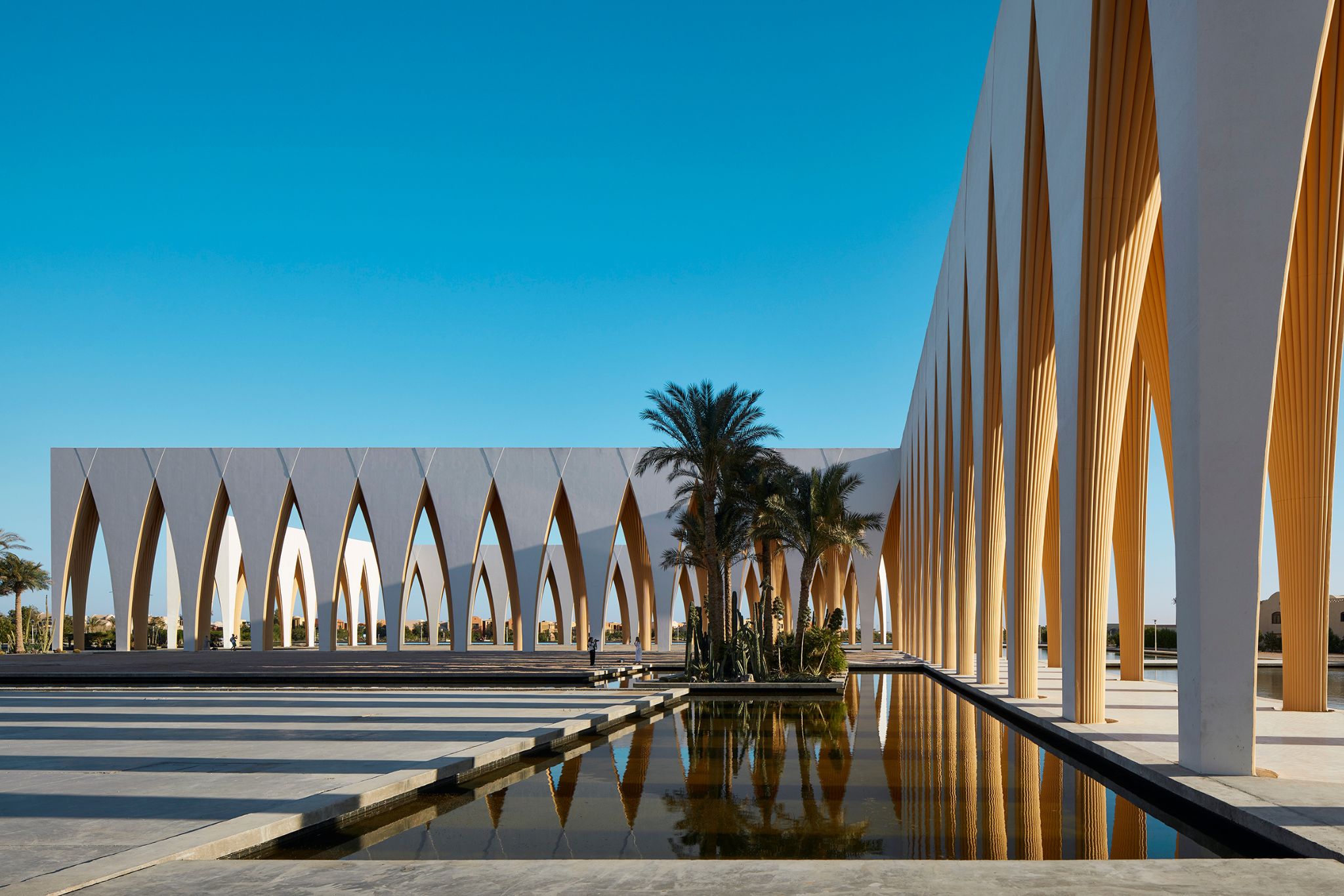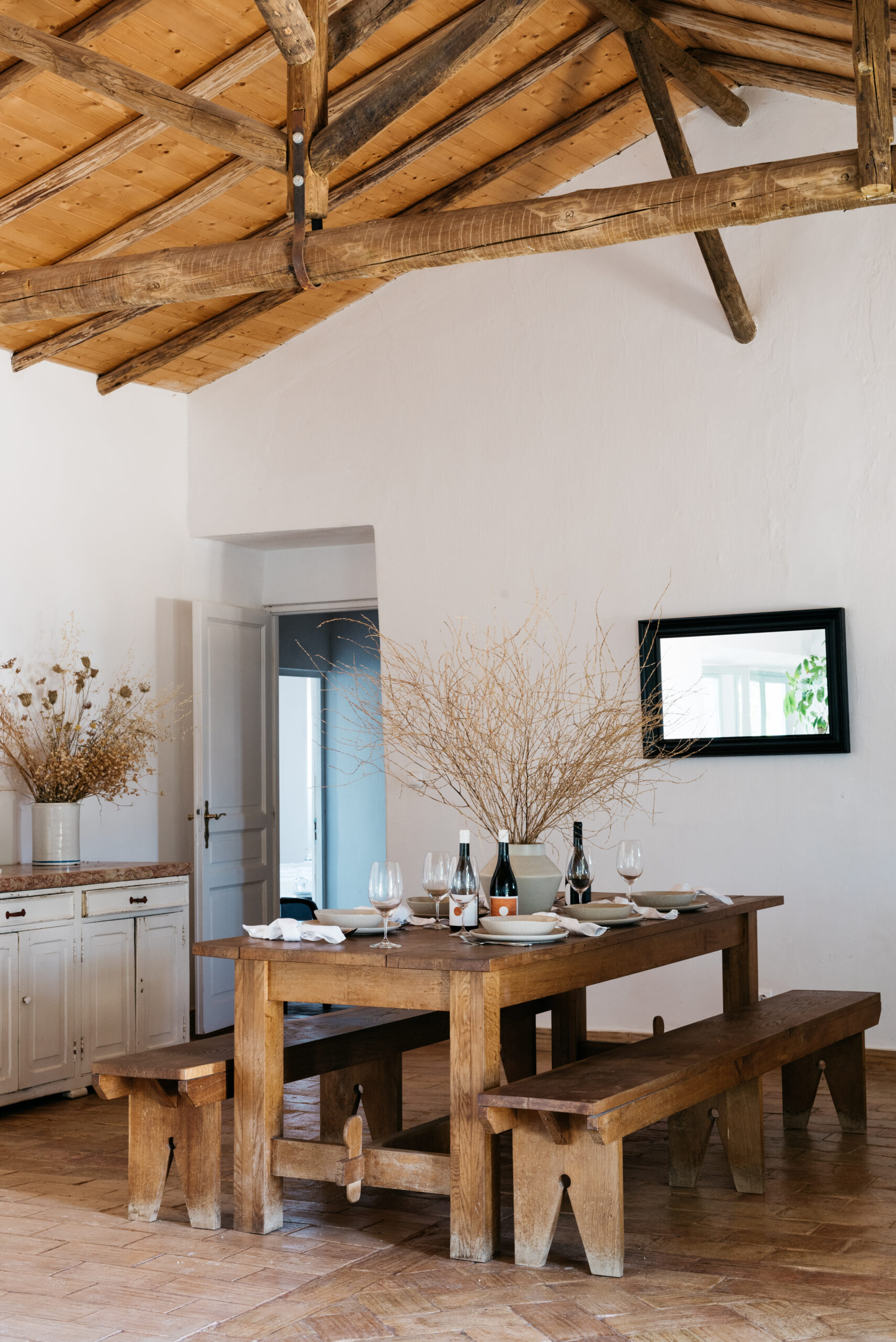Text by Terry Ward
Images courtesy of Studio Seilern Architects
Ask anyone who dreams of visiting Egypt about the sights at the top of their wish list, and chances are the responses will cover the unequivocally sublime, ancient wonders in places like Cairo, Luxor, Alexandria and Aswan (along with a requisite float down the Nile, of course).
But some 276 miles south of Cairo along the country’s Red Sea coast, the forward-thinking resort community of El Gouna, near Hurghada, is aiming to lure culturally-minded travelers its way with a landmark architectural project that rose from the sands here in October 2019.
Often referred to as Gouna Festival Plaza, the Gouna Conference and Cultural Centre rises like a monument from the surrounding desert.
Its first phase, completed in 2021, is composed of 147 elegant pre-cast concrete columns that widen like tulips as they stretch upward, as if on tippy toes and awaiting a kiss from the perpetually baby blue Egyptian sky.
The result is a monumental colonnade that leads through shaded pedestrian bridges where locals stroll, roller skate and pause to admire the columns’ interior fluting that casts a warm sandstone-hued glow as shadows play all around in the relentless Red Sea sun.

“It’s become a sort of public garden that belongs to the city of El Gouna,” says Alberto Favaro, a senior associate (and the GCCC project leader) for Studio Seilern Architects. The London-based firm designed the project at the request of Egyptian billionaire Samih Sawiris, who first began developing the resort community back in 1989.
Surrounding the structure and weaving through the colonnade, a lagoon (El Gouna means “the lagoon” in Egyptian Arabic) with a 30,000-square-meter footprint is fed by natural wells in the desert that return the water to the sea via canals. It’s a surprisingly sustainable feature of the building that, together with the shade provided by staggered columns, lends a natural cooling effect.
People gather to sit at the lagoon’s edges—cantilevered to keep the salty water from corroding the building’s terrazzo tiling and concrete—to chat, listen to music and, of course, pose for the perfect Instagram photo of their own image and that of the columns’ reflecting in the lagoon.
Laid out in three Tetris-like parts, the colonnade—the tallest structure in all of El Gouna, at 20 meters high—shelters three plaza islands within its walls, where future project expansions for the GCCC will be built. The result is a sort of celebratory plaza unified within a central area.
The northern plaza will be left open, designed to be configured as a festival ground with a platform that serves as a base for the traditional canvas tents often used to host outdoor events in this part of the world.

The other two plazas will eventually house a 600-seat concert hall and a conference center that can welcome 2,000 attendees, with the entire GCCC project slated to be finished by late 2024.
There are also plans to build a cafe within the northern plaza to lure residents to enjoy the area even when there isn’t an event being staged onsite (the entire grounds are open 24/7 to the public).
The GCCC’s sustainable design and community-minded focus tracks with the city of El Gouna itself. Committed to sustainability since its inception, it became the first town in the Africa and Arab region to receive a Global Green Town award from the United Nations in 2014 and is now on its way to becoming a new hub in the region for those who champion the arts.
Sawiris, who is said to have been inspired to bring a venue for classical music and orchestra to El Gouna after time spent in Berlin, also hired Studio Seilern Architects to design the Andermatt Concert Hall he funded in the eponymous Swiss resort town. The project later lured the Swiss Orchestra to take up residence within its walls.


The town of El Gouna, which spreads across 20 islands and is located about 30 minutes north of the popular scuba diving destination of Hurghada, has grown from a desert outpost to a community boasting luxury hotels and golf courses as well as amenities that attract its roughly 24,000 year-round residents, including a hospital, university and library. The town has one of the largest electric bicycle sharing programs in the Middle East. And with the addition of the GCCC, there is hope that the area will grow in importance for the arts, too, attracting performances, exhibitions, events and more.
The only way to achieve that for El Gouna is to create a proper cultural venue, says Favaro, adding that the firm, which has already put in a proposal for the concert hall, takes into account the public’s reaction to each new space as it debuts to help shape what comes next.
In 2021, the El Gouna Film Festival—on the region’s radar for fashion as much as film and founded by Naguib Sawiris (Samih’s brother)—held its fifth edition at the GCCC. The 2022 event was recently postponed and will be held here in 2023.
Events staged in the plaza in 2022 included the PSA International Squash Open. And for its inaugural event this fall, 2022 Forbes Middle East Under 30 Summit selected the GCCC for its venue, with the gathering of the brightest young minds from the region scheduled to take place from November 24 to 26, 2022.
It’s as if this building has become the beating heart of El Gouna.

What strikes visitors most when they stroll or roller skate along the Mugla white Egyptian marble tiles through the colonnade might be the sheer scale of the project. The sheer scenic breadth of the colonnade and the lagoon buffering it gives a feeling of walking through something that’s rooted in Egyptian history, even though the GCCC is brand new and built in a community that’s just a recent grain in the sands of time in a country with such storied history.
Favaro says the architects looked to ancient Egyptian monuments, uniformly enormous in scale, as well as El Gouna’s surrounding Nubian villages and other influences, like traditional Islamic arches and Moorish architecture, to create the project’s “monumental” sense of place and link it to the country’s heritage.
“The flower-shaped columns reference modern interpretations of Egyptian columns,” he says. “But it’s the scale of the columns that really links the project to traditional Egyptian architecture.”

The work of erecting the enormous columns was, of course, much more efficient in modern times, says Favaro. All were fabricated on site and positioned into place in just 16 weeks in late 2019 in order to ensure the plaza would be ready for a private event the client had planned. The finishing touches, including the interior fluting effects, were completed in 2021.
What’s been most interesting and rewarding to watch so far from an architect’s perspective, says Favaro, is the way in which the city of El Gouna has embraced the GCCC as its own.
“The building was on the outskirts of El Gouna when we started the project,” he says, but now the city is growing around it and almost outward from it, too.
“It’s as if this building has become the beating heart of El Gouna.”




